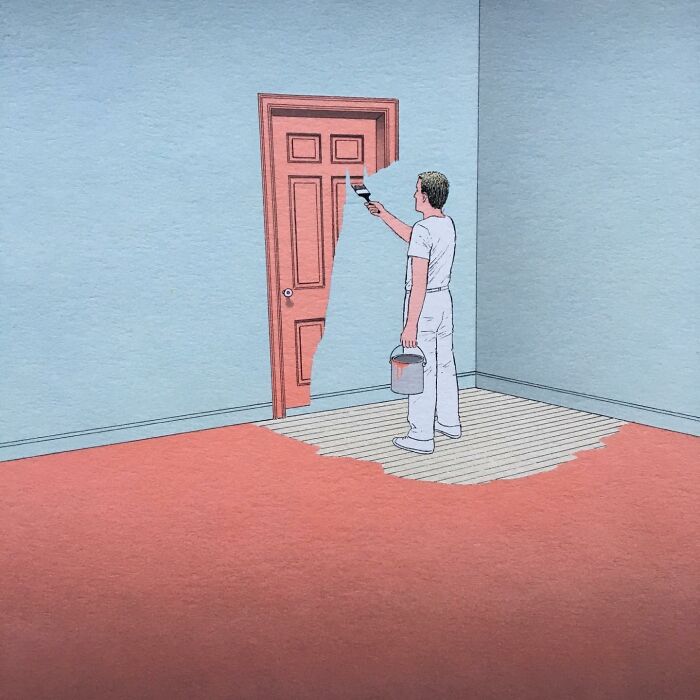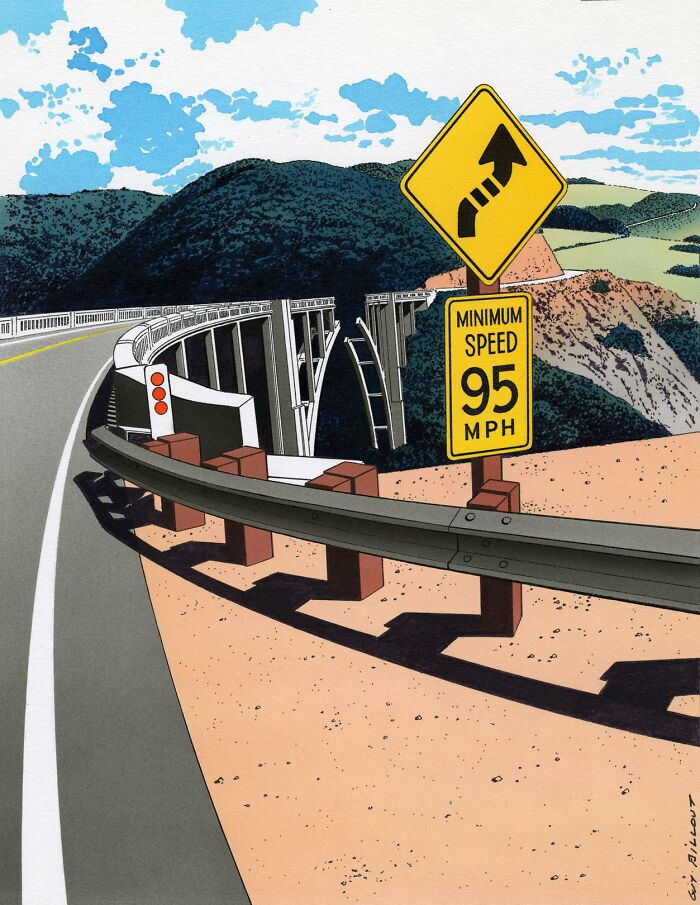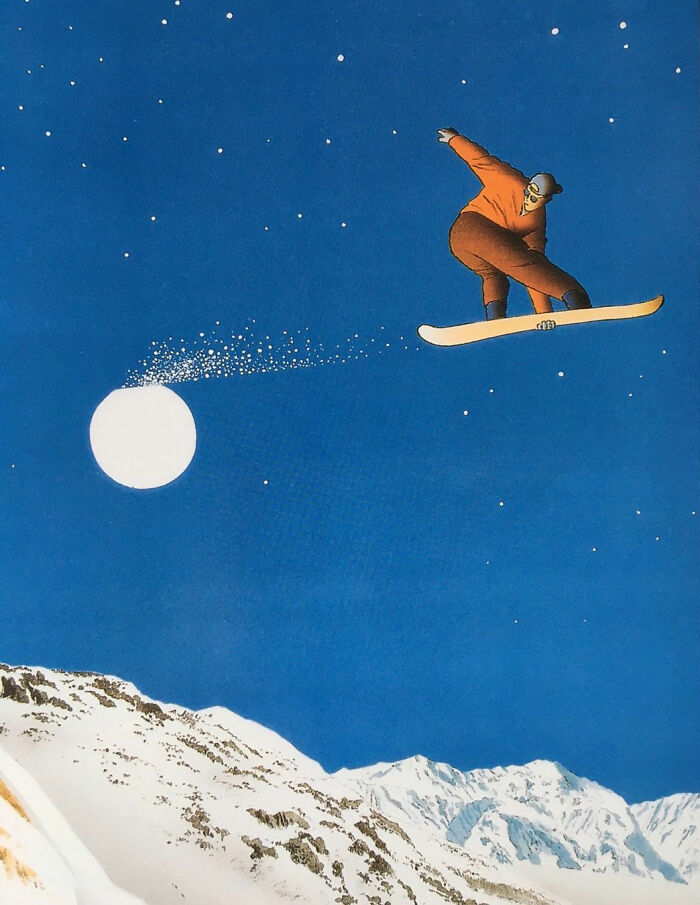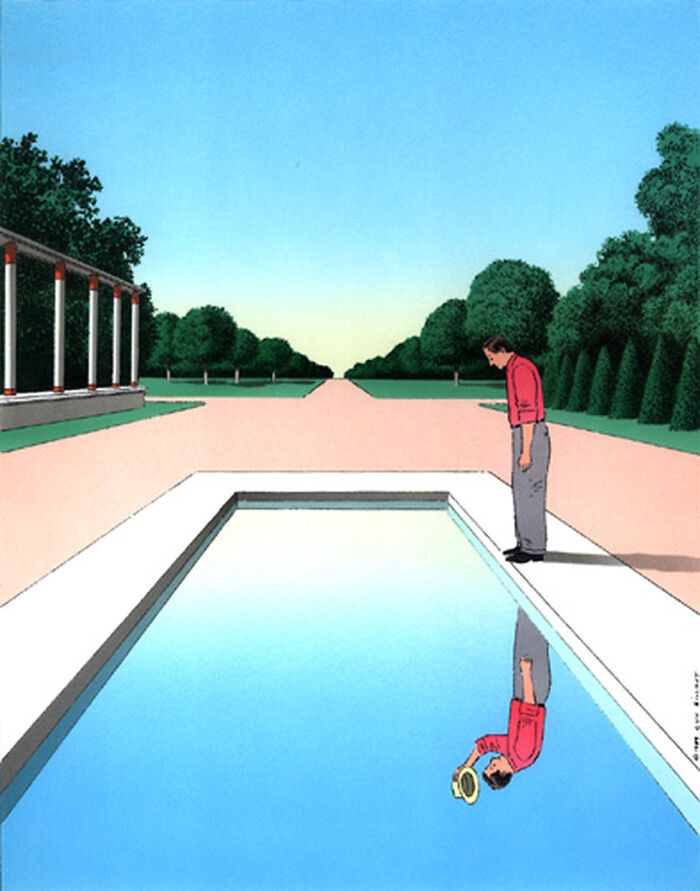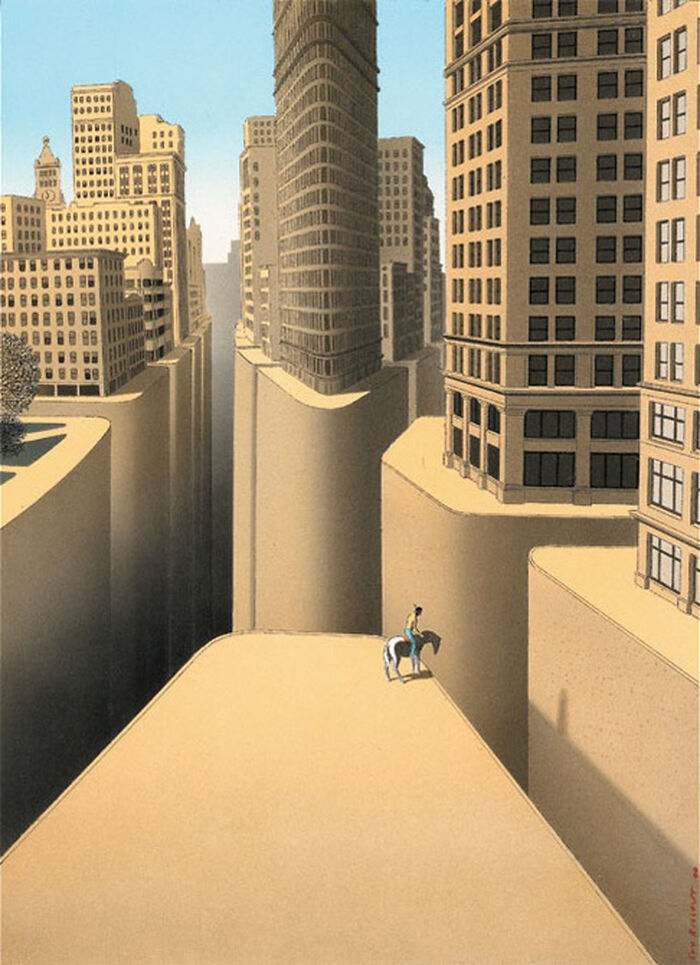
30 Illustrations Infused With Dark Humor And Optimism By Guy Billout (New Pics)
Interview With ArtistGuy Billout, a French surrealist artist and illustrator, is known for his thought-provoking artworks that challenge the laws of logic. Born and educated in France, Billout moved to New York City in 1969 and started his career in advertising. He gained fame after his work was published in the New York Magazine, which allowed him to express himself freely in his illustrations. Since then, he has worked with several big US media outlets like The New York Times, The Wall Street Journal, and many more. He is also the author of several book illustrations.
Billout's style is characterized as clean, spare, and precise, with a surrealist element that portrays a parallel dream world. His works often incorporate some ironic element with lush colors and exquisite craftsmanship. In 2016, he was inducted into the Society of Illustrators Hall of Fame, and he has been described as "more than an illustrator, a compassionate poet of the absurd."
If you are interested in Guy Billout’s works previously posted on Bored Panda, you can click here.
More info: Instagram | graphis.com
This post may include affiliate links.
Bored Panda has reached out to Guy Billout to find out more about his surreal work. We wanted to know how the artist decided on themes and subjects for his illustrations. Billout told us: “Most of my commissions are editorial and corporate illustrations, which means that my power of decision is about how to serve a theme or topic formulated by somebody else. It is quite different when I am given carte blanche, which allows me to develop my own themes. The way I decide about my own stories or subjects is empirical, or based on improvisation. To give you an example, I have worked for a series of illustrations for The Atlantic Magazine for which I was granted total freedom of interpretation.”
Next, we wanted the artist to discuss the role of surrealism in his work. Guy Billout said: “Many illustrations of The Atlantic series already mentioned, which I consider as my best work, are more about 'What’s Wrong with this Picture?' than surrealism. When I am looking at my photos for an idea, I am looking for a 'mistake' to derail the reality captured by the camera, in other words, looking for a visual pun, a gag. If some significance or poetic overtone is revealed in the final image, it is not intentional.”
Asked about particularly challenging projects Billout had to work on in his career, the illustrator answered: “The most modest assignment for an obscure publication and little money is more challenging than doing a book, for example, with total freedom. With any story written by somebody else, I am always afraid to be unable to find the 'right' visual solution, the 'perfect' idea.”
Then we were interested in how the artist adapts his art to suit different audiences, knowing he has worked with a wide range of media outlets and clients. Billout told us: “I have been trained and developed as a commercial artist, getting my clues from the expectations of my clients (as long as they don’t tell me what to do), with little awareness of my audience. However, experience shows me that this relative adaptability is less interesting than being on my own, free of any expectation.”
Reminds me of those little silkworms when I was a kid that seemed to come from the clouds. There wouldn't be a tree anywhere near me in the middle of a field & a silkworm would drop down and just dangle there.
You didn’t accomplish s**t! You simply rode a breeze and dangled from a cloud!!!
So many people here don't get this is the idea that at the top of the world is a light switch
We wanted to know how Guy Billout stays inspired and motivated as an artist. He said: “I have been mostly dependent on the deadlines, and the demands from my clients to motivate myself. It is a little more difficult to incite me to draw without that pressure.”
Dammit Bobby, what did I tell you about playing with the ball filled with stardust...
"it's like they are throwing their own skin" imagine the human equivalent
Oh god, it's one of those math word problems! I guess the answer is "they never meet".
I love Billout's work. He used to illustrate the front cover of The Atlantic magazine; I collected them and even have a couple framed.
These are what you would get if Salvador Dalí did Japanese woodblock prints.
I love Billout's work. He used to illustrate the front cover of The Atlantic magazine; I collected them and even have a couple framed.
These are what you would get if Salvador Dalí did Japanese woodblock prints.

 Dark Mode
Dark Mode 

 No fees, cancel anytime
No fees, cancel anytime 










